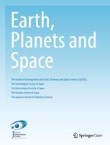Synthetic Aperture Radar (SAR) is a powerful tool for imaging Earth's surface as it works day and night and regardless of the presence of clouds. SAR images taken from L-band SAR satellites complement those taken from satellites at shorter wavelengths such as C-band and X-band – L-band images have less resolution than C- and X-band images, but are more coherent over time, especially in vegetated regions. L-band data is typically easier to unwrap (higher coherence and fewer fringes), but more susceptible to effects of the ionosphere.
L-band SAR satellites include JERS-1 (1992-1998), ALOS (2006-2011), ALOS-2 (2014-present), which have recurrence time of order a few weeks. Such recurrence times do not allow monitoring with high temporal resolution. However, after the launch of ALOS-4, NISAR, Tandem-L, and SAOCOM in the next few years, we will be able to monitor Earth's surface every few days with L-band SAR. Therefore, now is a good time to review what we have learned from previous and ongoing L-band missions (space-based and airborne) and what we expect to learn from future missions.
Edited by Yosuke Aoki, Masato Furuya,
Francesco De Zan, Marie-Pierre Doin,
Michael Eineder, Masato Ohki, Mark Simons,
Tim Wright











